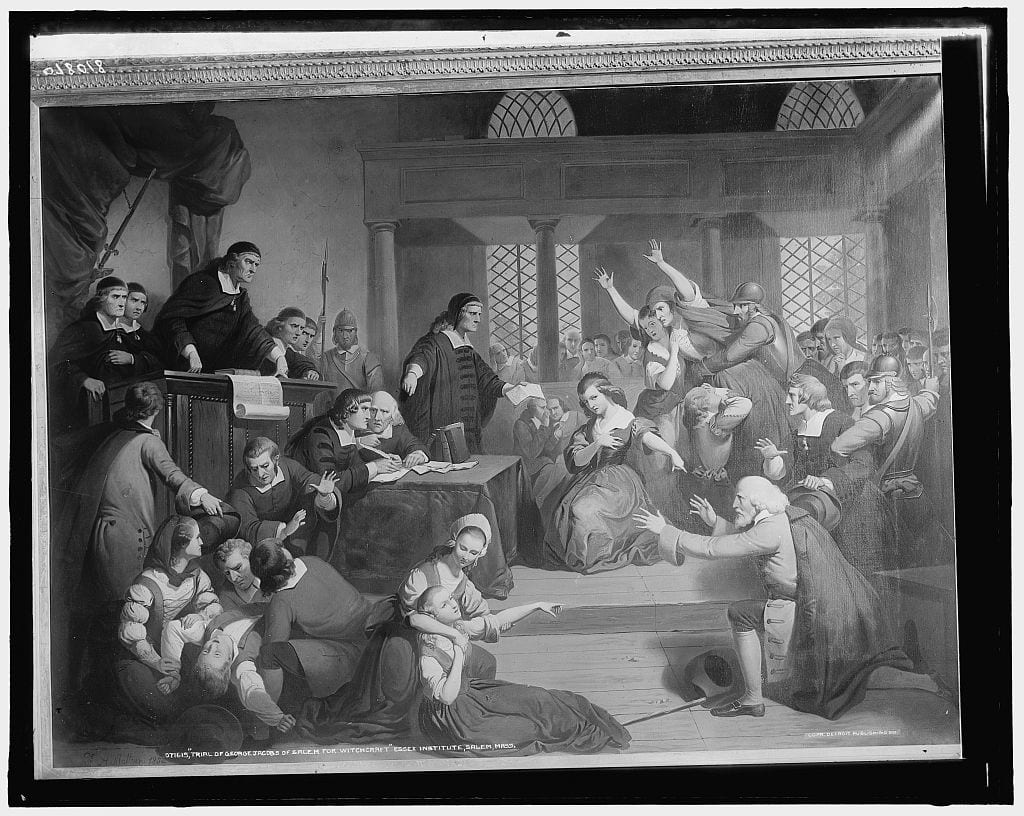Wide-reaching witch hunts are like fires; they rarely occur spontaneously, are in need of previously established fuel, are started through an initial spark, and are sustained by adding more fuel for it to consume. While these accused witches were hanged or pressed rather than burned, when discussing the Salem witch trials building a fire is an apt metaphor with each stage corresponding to the societal conditions at Salem.
Month: August 2020
Before Europeans established colonies in America, magical practices and traditions were an essential part of European life. People who practiced magic, often referred to as “cunning folk” or “wise folk,” were respected and valued by their communities. They were experts in the arts of healing and divining and were often the first people their neighbors would turn to in times of hardship. Magic was so much a part of daily life that people would practice it in their own homes, especially given that many magical rituals did not require any training. Magic was used to heal the sick, protect people and their families from harm intended towards them by others with whom they had disagreements; protect their livestock and economic stability from natural and deliberate causes; and to ease daily difficulties such as aiding in finding lost belongings.

Salem Witch Trial Scene – (Original Caption) Salem Witch Trial. Accusation of bedeviled girl. After an engraving by Howard Pyle.
The supernatural, magic, and witchcraft persisted to be a part of the United States belief system as a result of a sincere, generational fear of the unknown. In American history, early modern European migrants and New England Puritans feared anything paranormal, and most importantly, witches that could harm their families. There were many factors involved which led to the accusations of witchcraft in Puritan society. Some of the biggest reasons for why accusations ravaged Salem included fear, the belief in both good and bad witchcraft, the willingness of physicians to utilize witchcraft as a form of medical diagnosis, politics, and potential ergot poisoning. Sadly, for those accused of witchcraft in Salem, the factionalism of both the Town and Village provided the ideal conditions for what is most widely regarded as the greatest witch-hunt in American history.
This image of the title page is from one of the surviving 1682 editions of A True History of the Captivity and Restoration of Mrs. Mary Rowlandson. Mrs. Rowlandson was taken captive during a raid on Lancaster, Massachusetts during King Philip’s War; a war initiated by Metacom (Philip was his english name), sachem of the Wampanoag tribe, over strained relationships with New English settlers and encroachments on their lands and sovereignty. Other regional tribes joined as allies of Metacom or independently as enemies of the New English settlers. Mrs. Rowlandson and about twenty other survivors, mostly women and young children, were taken in what Native cultures called a Mourning War, in which captives were taken from neighboring or hostile people and gradually incorporated into the captors tribal unit to replace loved ones and replenish the population. The bloody nature of the Lancaster raid can be attributed to deep seated hostilities between the Invasive and Native populations. Many English captives were returned; those that were not had been assimilated or died. Most Native captives were not so lucky. Most were killed before they could be taken, others fled to neighboring tribes; those that were not dead and could not flee were sold into regional or foreign slavery, usually to the Caribbean sugar islands. Christian Indians, Native people who had adopted Protestantism and the English language, were usually exiled to Praying towns or reservations.
Colonists used the belief of witchcraft to grapple with psychological tensions and concerns that had developed out of trying to make sense of their new external worlds, ultimately embedding witchcraft into the cultural belief system of the United States. In England, the Church suppressed any voice or power women may have had by limiting their societal roles. On the other hand, the Puritans believed that men and women were “equal” in the eyes of God. When arriving to the new settlements, Colonists needed to rely on both men and women to do their designated roles faithfully. This was to ensure the success and stability of their communities. Accusations of women practicing witchcraft in New England came about because the strict moral doctrine that Puritans adhered to created gendered societal roles and fear concerning the inability to attain salvation.
© 2024 Crisis and Catharsis
Theme by Anders Noren — Up ↑



